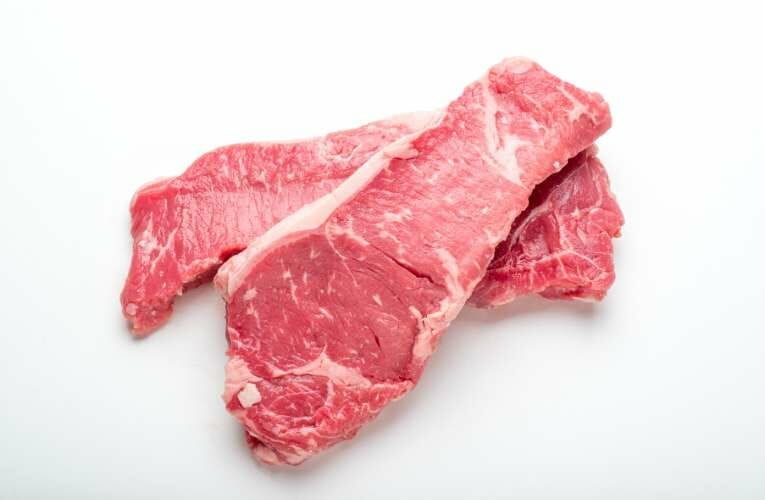Trimming fat off New York strip steak is a personal preference and can impact both the flavor and texture of the meat. Some people prefer to leave the fat on while cooking to enhance the juiciness and flavor.
However, if you prefer a leaner cut, trimming the excess fat can result in a healthier and leaner option. It is essential to note that the marbling in the steak provides flavor, so removing all fat may affect the overall taste.
Ultimately, the decision to trim or not depends on your personal taste and dietary preferences.
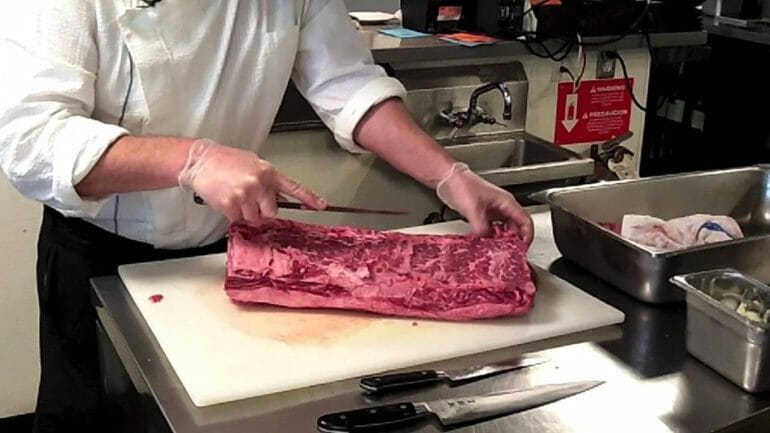
Benefits of Trimming Fat off Your New York Strip Steak
When it comes to enjoying a juicy and flavorful steak, the New York strip steak is often a top choice for many meat lovers. This cut of meat is known for its tenderness and rich taste. However, one aspect that may need some consideration is the fat content.
Trimming the fat off your New York strip steak can provide several benefits, both in terms of health and taste. Let’s take a closer look at why trimming fat off your steak is a good idea.
1. Reduced Calorie Intake
One of the main advantages of trimming fat off your New York strip steak is that it helps reduce your overall calorie intake. Fat is the most calorie-dense nutrient, containing 9 calories per gram compared to 4 calories per gram in protein and carbohydrates.
By removing visible fat, you can significantly decrease the calorie content of your steak without compromising on taste.
2. Lowered Risk of Heart Disease
High intake of saturated fat, which is commonly found in fatty cuts of meat, has been linked to an increased risk of heart disease.
By trimming the fat off your New York strip steak, you can reduce your intake of saturated fat and minimize the risk of developing cardiovascular problems. Opting for leaner cuts of meat is a great way to maintain a heart-healthy diet.
3. Improved Texture
Trimming the fat off your New York strip steak can also enhance the texture of the meat. Excessive fat can make the steak feel greasy and overly fatty, affecting the overall enjoyment of the meal.
Removing the visible fat helps create a more tender and succulent steak, allowing you to fully savor the natural flavors of the meat.
4. Better Cooking Control
When cooking a New York strip steak, trimming the fat can provide better control over the cooking process. Fat tends to render and melt during cooking, potentially causing flare-ups and uneven cooking.
By removing the excess fat, you can ensure that the steak cooks evenly and achieves the desired level of doneness.
5. Enhanced Presentation
If you are serving your New York strip steak to guests or simply want to elevate the visual appeal of your meal, trimming the fat can help enhance the presentation.
Fat can shrink and distort the shape of the steak, making it look less appealing. Removing the fat allows the steak to maintain its shape, resulting in an aesthetically pleasing presentation that is sure to impress.
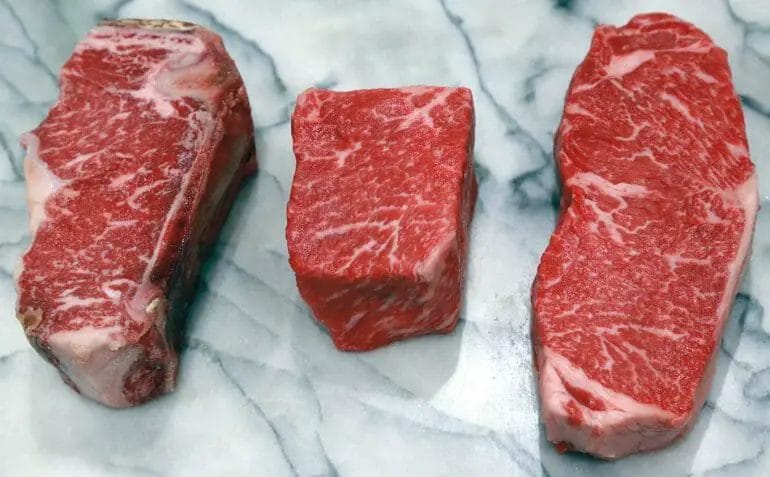
How to Properly Trim Fat from a New York Strip Steak
Trimming the fat from a New York Strip steak is an essential step to achieve a lean and flavorful piece of meat. The excess fat not only adds unnecessary calories but also prevents the steak from cooking evenly.
In this section, we will discuss the step-by-step process of trimming fat from a New York Strip steak and ensure that you end up with a delicious and succulent piece of meat.
Tools and Ingredients
Before we begin, gather the following tools and ingredients:
- New York Strip steak
- Sharp knife
- Cutting board
- Paper towels
Step 1: Chilling the Steak
Start by placing the New York Strip steak in the refrigerator for about 15-30 minutes. Chilling the meat will firm it up, making it easier to handle and trim.
Step 2: Removing Excess Moisture
Remove the steak from the refrigerator and pat it dry with paper towels. Removing excess moisture will help the knife glide smoothly and provide better control while trimming.
Step 3: Identifying the Fat
Take a close look at the steak and identify the areas with excess fat. The fat appears as white or yellowish marbling throughout the meat. Pay attention to the edges as they tend to have more fat.
Step 4: Trimming the Fat
Place the steak on a cutting board and carefully hold it with one hand. With the other hand, grip the knife and start trimming the fat. Hold the knife at a slight angle and gently slice away the excess fat, following the contours of the meat.
It is important to remove only the visible fat and not cut into the lean muscle. Take your time and make small, precise cuts to avoid any wastage of the meat.
Step 5: Checking for Balance
Once you have trimmed the visible fat, check the steak for balance. Run your fingers gently over the surface to detect any remaining pockets of fat or unevenness.
If you find any, use the knife to carefully remove them, ensuring that the steak is even and uniform in thickness.
Step 6: Final Touches
After trimming the fat, rinse the steak under cold water to remove any loose fat particles. Pat it dry with paper towels one more time before proceeding with your desired cooking method.
Remember that fat adds flavor, so be cautious not to remove all the fat. A moderate amount of marbling will enhance the taste and juiciness of the steak.
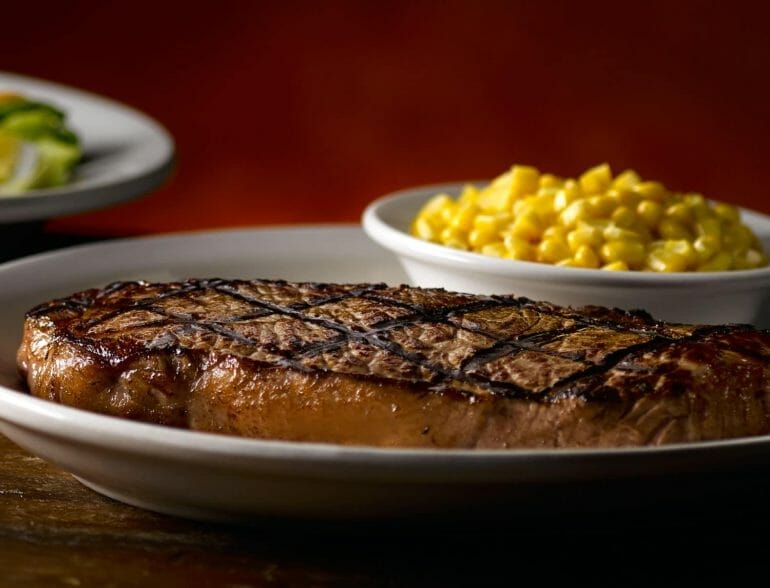
Does Trimming Fat Affect the Flavor and Tenderness of a New York Strip Steak?
When it comes to cooking a juicy and flavorful New York strip steak, there is an ongoing debate about whether to trim the fat or leave it intact. Some argue that trimming the fat can affect the flavor and tenderness of the steak, while others believe that it has no significant impact.
In this section, we will explore this topic and provide you with some insights to help you make an informed decision.
The Role of Fat in Steak
Fat plays a crucial role in the flavor and texture of meat, including New York strip steak. It provides moisture, tenderness, and adds richness to the overall taste. However, not all fat is created equal.
There are two types of fat commonly found in steak: external fat (also known as trim fat) and marbling fat.
The external fat is the layer of fat that covers the steak. It can be trimmed off before cooking or left on. On the other hand, marbling fat refers to the thin streaks of fat within the muscle fibers of the meat. Marbling fat is highly desired as it enhances tenderness and adds flavor during cooking.
Trimming Fat: Pros and Cons
Trimming the external fat from a New York strip steak has both pros and cons. Here are some points to consider:
- Pros:
- Improved presentation: Trimming the fat can result in a more visually appealing steak with a cleaner appearance.
- Reduced flare-ups: Fat can cause flare-ups on the grill, so trimming it off can help prevent excessive charring or burning.
- Cons:
- Loss of flavor: Fat contributes to the overall flavor of the steak. Trimming it off can result in a slightly less flavorful steak.
- Possible dryness: Removing the fat can lead to a slightly drier steak, especially if it is cooked to a higher level of doneness.
Considerations for Trimming Fat
If you decide to trim the fat from your New York strip steak, here are a few considerations:
- Thickness of the steak: Thicker steaks tend to retain more juiciness and tenderness, even after trimming the fat, compared to thinner cuts.
- Cooking method: The cooking method you choose can also influence the impact of trimming fat. For example, grilling a trimmed steak may result in more moisture loss compared to pan-searing or broiling.
- Seasoning and marination: To compensate for any potential loss of flavor and moisture, consider using marinades or seasoning blends to enhance the taste of the steak.
Alternative Options
If you are concerned about the impact of trimming fat on flavor and tenderness, there are alternative options to consider:
- Partial trimming: Instead of completely removing all the fat, you can opt for partial trimming. This way, you retain some of the flavor and moisture while still achieving a visually appealing steak.
- Render the fat: Another option is to render the external fat before cooking. This involves melting the fat over low heat, which helps to preserve the flavor while reducing the excess fat.
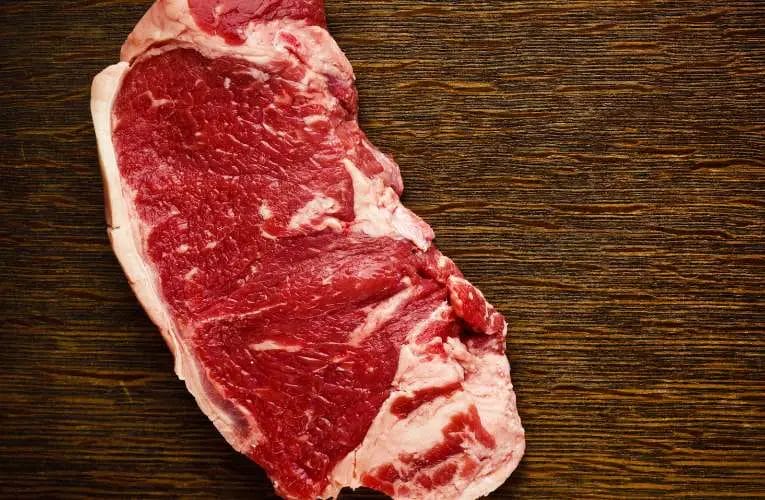
Expert Tips for Trimming Fat off New York Strip Steak
Trimming fat off a New York strip steak can be a daunting task, especially if you want to maintain the flavor and tenderness of the meat. However, with the right techniques and expertise, you can easily remove excess fat without compromising the quality of the steak.
In this section, we will share some expert tips to help you trim fat off your New York strip steak like a pro.
1. Chill the Steak
Prior to trimming, it is recommended to chill the steak in the refrigerator for about 30 minutes. This will firm up the fat, making it easier to remove. A chilled steak will also hold its shape better during the trimming process.
2. Use a Sharp Knife
Having a sharp knife is crucial when it comes to trimming fat off a New York strip steak. A dull knife can lead to an uneven cut, potentially damaging the meat. Use a high-quality chef’s knife or a boning knife for precise and clean cuts.
3. Identify the Fat Cap
Before you begin trimming, identify the fat cap on the steak. The fat cap is the layer of fat that covers one side of the steak. It is typically thicker and can be easily distinguished from the marbling within the meat. Trimming excess fat from the fat cap will enhance the texture and flavor of the steak.
4. Trim in Small Sections
To ensure even trimming, it is advisable to work in small sections. Start by slicing off thin strips of fat, slowly working your way through the fat cap. Take your time and be patient to avoid removing too much meat along with the fat.
5. Trim against the Grain
When trimming fat off a New York strip steak, it is important to cut against the grain. This means cutting perpendicular to the lines of muscle fibers. Trimming against the grain will result in a more tender and enjoyable eating experience.
6. Preserve Some Fat for Flavor
While trimming excess fat is important, it is also crucial to leave a thin layer of fat on the steak for added flavor. This thin layer will render and melt during cooking, enhancing the taste and juiciness of the meat.
7. Remove Silverskin
In addition to the fat cap, New York strip steaks may also have a tough connective tissue called silverskin. This silver-colored membrane should be removed as it can be chewy and unpleasant. Use your knife to gently slide under the silverskin and lift it away from the meat.
8. Season and Grill to Perfection
Once you have trimmed the fat off your New York strip steak, it’s time to season it and prepare it for grilling.
Use your preferred seasoning or marinade to enhance the flavors. Grill the steak to your desired level of doneness, and enjoy a lean and delicious meal.

FAQs
Should you trim fat off New York strip steak?
It is a personal preference whether to trim the fat off a New York strip steak. Some people prefer to leave the fat for added flavor and juiciness, while others choose to trim it for a leaner cut.
Wrapping Up
In conclusion, whether or not to trim the fat off a New York strip steak is a matter of personal preference. While some people prefer to remove the excess fat for health reasons or to reduce the risk of flare-ups on the grill, others enjoy the added flavor and juiciness that the fat provides.
It is important to note that the fat on a New York strip steak does contribute to its overall taste and tenderness. If you do choose to trim the fat, it is recommended to leave a thin layer to enhance the flavor and retain the moisture during the cooking process.
Ultimately, the decision to trim the fat off a New York strip steak rests with you and your desired taste preferences. So, go ahead, fire up the grill, and enjoy a delicious and succulent steak, whether it’s with or without the fat!

